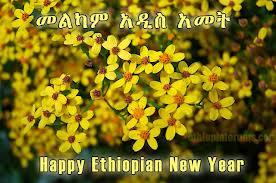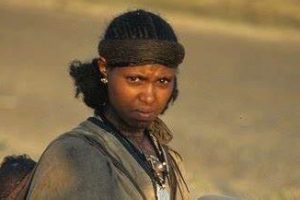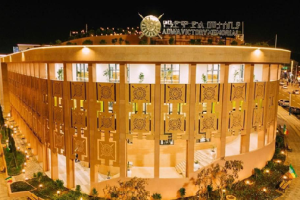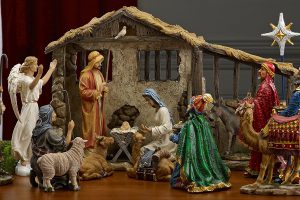
There is no society in the world that does not express itself through culture. The same goes for Ethiopian who rejoice holidays with songs, traditional festivals and some with carnivals and large crowds showcasing cultural activities.
The melody and popularity of songs made traditional artistic performances not only adorable, but also intergenerational in the Ethiopian statehood. It is also believed that cultural events play a significant role in the transformation and modernization of the people.
September is a month of elation in which various spiritual, cultural festivities are take place accentuated by ritual activities, songs and other artistic performances. It is also fall of the Ethiopian New Year.
Starting from the Eve of the New Year, Ethiopians from various cultures bid farewell to the rainy summer, welcome the sunny winter season. Most of the festivals commemorate this time happen at open spaces accompanied with songs, choirs and traditional dances.
New Year’s festivities that take place regardless of age and sex differences lies between mid-August and mid-September. In some areas, they may extended until early October. The Festival of Transfiguration locally known as Debre Tabor or Buhe happen on August 12 and 13 with active participation of boys who play traditional song Buhe Belu or Hoya Hoye touring the houses of their village. On the other hand, girls also perform Abebayehosh, traditional songs and dances on the first day of Ethiopian New Year (September 11). These festivities have their own historical backgrounds, religious interpretations, and cultural values.
Culturally, the songs and dances are often perform by unmarried people. Christian scholars also pointed out that these performances are a kind of rituals that have been applied by believers beyond their cultural values. Community science experts for their part testified that the performances have been around for years as they strengthen community bond, promote and preserve traditional costumes and materials.
According to historical documents, “the thirteen-month of sunshine Ethiopia” celebrates varieties of traditional festivals from mid-August to early October.
As the surrounding plains, mountains, and ridges adorn the capital Addis Ababa with aromatic flowers, they look resemble to the New Year flower of Addey Abeba. The rivers, lakes, including the Ethiopian sky, begin to get pure from summer’s foggy atmosphere and rain. And the land will be covered by green carpet cleaned from muddy water of the flood.
These scenes indicate the smooth transition between summer to the winter season in Ethiopia. Thus, people will gather to chant and address prayer to their God in these holidays. The traditional and spiritual songs and other performances vary depending on the spiritual and cultural believes from one corner to the other.
In the New Year, with new spirit, with strong hope, new initiatives would be proposed. In addition, the Ethiopian nationalities would change their days by cultivating their own unique culture during this month.
To mention some of the popular holidays, as a land of origin Ethiopian calendar, unlike the Gregorian’s calendar is composed of 13 months. While the 12 months have 30 days each, the 13th month named Pagumen has regularly five days but changes to six days every leap year, this year it has five days. As such, the Ethiopian New Year starts in September, or Meskerem in the local language, not in January.
The Ethiopian New Year holiday is known as Enkutatash which means the ‘gift of jewels’ as stated in legends. “King Solomon of Jerusalem gave the Queen of Sheba jewelry during her historic visit to Jerusalem some 3,000 years ago. Her return to Ethiopia after receiving the gift coincided with the New Year celebration in September, and hence the name Enkutatash came to be.”
Meskel festival at the Meskel Square in Addis Ababa, has a special place where Demera is celebrated. There is a cross with huge incandescent light bulbs, which is said to be the largest in Ethiopia and Africa. During the festival, a variety of traditional dishes will be served. From child to adult, they dress up in traditional attire and go to the venue. During their travels and ceremonies, religious and cultural melodies were sung praising the cross and symbolizing the changing times.
The Agame Meskel festival in Adigrat, Tigray is one of the most celebrated places in the country. Adigrat was formerly known as Agame District, and is now the capital of the East Tigray Zone. The city is located in a mountainous area, not far from Eritrea. The city had more commercial activity than the pre-Ethio-Eritrean war.
The Meskel festival in the southern region, beyond the Gurage cross, embraces a different culture in Gamo. Meskel is a New Year’s greeting in Gamo. They said, ‘Funny Yoyo!’ They say. Even when it is translated, it transcends time. This is called the time of the cross. The cross is a celebration of joy, so it is said that if there is a problem before the cross, it will not cross the cross.
Chimeri in the people of Gambella that is practiced in the banks of the Baro River in relation with the new year, the holiday goes with a new idea, new thinking leaving behind yesterday’s evil, resentment, and revenge.
The ceremony is attended by religious leaders and elders. At that time, children rush to the Barrow River to sing the Chimeri. In the first month of the New Year, Chimeri is a wishful thinking for the health of mothers and their children. The festival, which runs from September 18, may continue until October.
New Year’s Eve is the most important of these celebrations in the Shinasha community, one of the five communities in the Benishangul-Gumuz region, is widely distributed in the Dabati, Bulen, Wenbera, Dangur, Gilgel and Asosa areas. Members of the Shinasha community have a unique way of expressing their identities. Celebrations of the community are invaluable.
Members of the community who have left their homes for various reasons gather for the celebration. The Garo festival is a popular festival celebrated by the major Shinasha tribes, known as Doo, Indoro, and Indo. It is also a time when the bridegroom chooses his mate, forgives his or her differences, and prepares to start the New Year with new hope.
The Wolayita Nation has its own calendar. It is called “Gifata, the first month of the year.” It means to transcend time, meaning “great.”
Although the calendar does not give a specific name, they welcome the New Year on the fourteenth and twentieth days of September. Every year from September 14 to 20, New Year’s Day is called ‘Shuha Wega’.
The Fiche Chambelala is the New Year of the Sidama Nation, the newly recognized as the tenth regional state in Ethiopia. Fiche is the eve of the end of the old age, and Chambalala is the beginning of the new age. Fiche’s implication is that the New Year is a year of blessings, joy and happiness.
Though the country is home to various ethnicities with their own culture and schedule to celebrate it, most of the New Year festivities lies within specific periods in this season.
BY HAFTU GEBREZGABIHER
The Ethiopian Herald 11 September 2021





